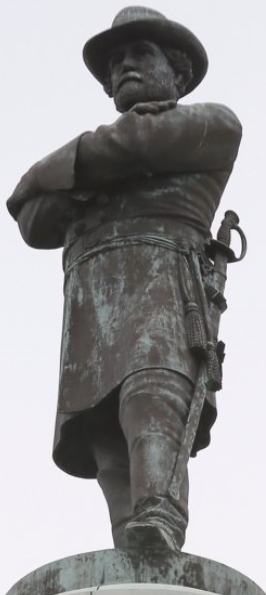
Link to video on Robert E. Lee
Robert E. Lee the “Man who Tamed the Mississippi”
From 1837-1841 Lt. Robert E. Lee was in the engineer in charge of the Mississippi River Valley for the U S Army. The Army Corps of Engineers had yet to be established. At the time the Mississippi River was moving away from the city of St. Louis Missouri toward Illinois.
Lee’s mission was to “Tame the Mississippi” and save the city of St. Louis as a port. Two others before him failed. Lee succeeded and river commerce prospered helping New Orleans become a leading city in America.
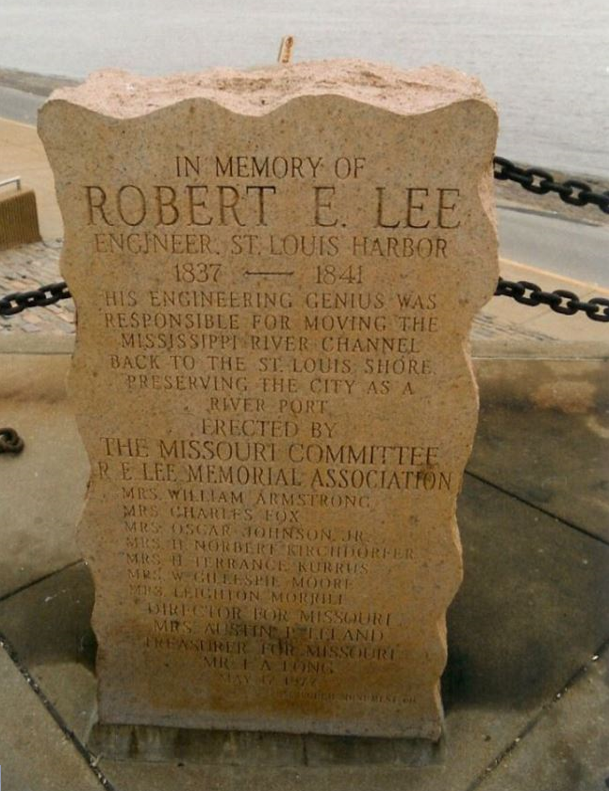
Taming the Mississippi is one of eight Great Projects of American History. It would be a lifetime achievement for any engineer.
“Great Projects: The Epic Story of the Building of America, from the Taming of the Mississippi to the Invention of the Internet” – by James Tobin (Author)2001

Editorial Reviews Amazon.com Review
What is it, James Tobin asks, that has driven Americans to so thoroughly remake their country generation after generation, made them so avid to undertake massive works of public engineering and so capable at that work?
His case studies, which take in such things as the decades-long struggle to control the flow of the Mississippi River, the construction of New York’s George Washington Bridge, and even the birth of the Internet, offer many answers. One factor, he answers, is the widespread belief in special providence, in the possibilities of progress and in the wisdom of “turning the wilderness to their advantage,” of taming nature, in the notion that “good things should be not only for elites but for everybody.”
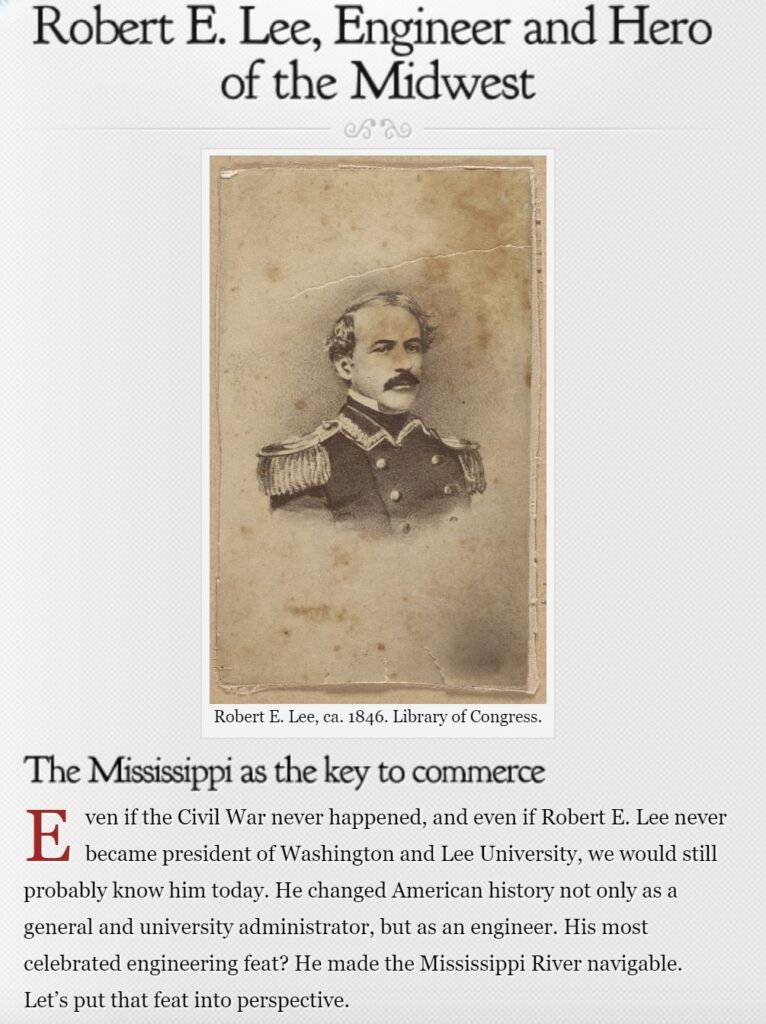

Steamboat Race: Robert E. Lee vs the Natchez, July 4, 1870
A tribute to Lee’s engineering became the Robert E. Lee steamboat.
The most well-known steamboat race in American history, the Robert E. Lee vs. the Natchez was never close. Beginning on June 30, 1870 the Lee had a head start of a few minutes that turned into hours during the first day of the race. Both boats experienced problems. The Robert E. Lee burst a steam pipe the first night allowing the Natchez to come within three minutes of her, the closest margin of the race. Later the Natchez lost a water pump that cost it thirty minutes and had to stop again because of fog, losing five hours.
The Robert E. Lee arrived in St. Louis on July 4, 1870 around 11:30 am in the morning; the Natchez followed, arriving at 6:00 pm. People in East St. Louis and St. Louis turned out to watch the arrivals.
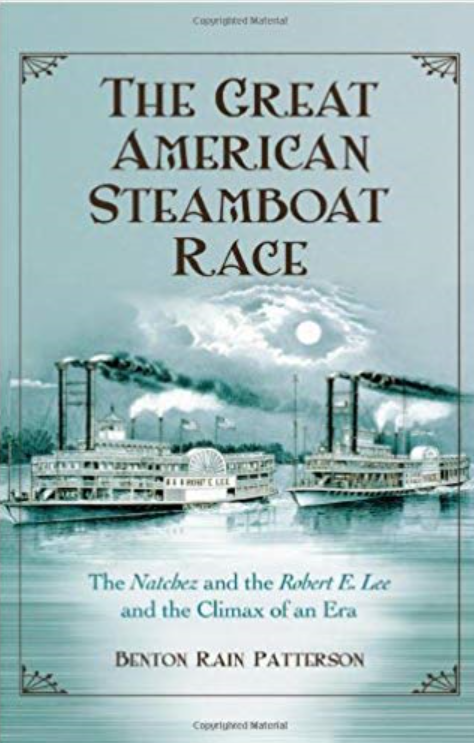
Robert E. Lee as a Mexican-American War Hero.

Lee was stationed in New Orleans at Jackson Barracks before leaving for Mexico via land. He was responsible for the March 7, 1857 landing at Vera Cruz of 80 ships and 12,000 men. There were no lost ship and no causalities.
Lee then devised the 250 miles march to Mexico City and the Halls of Montezuma. As a result the U S Marines added the Red Stripe down the side of their uniform.

Lee’s 1856 letter to his wife: “….Slavery as an institution is a moral and political evil.”

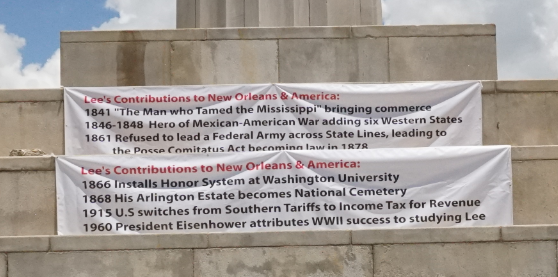
z
Eisenhower hanged Lee portrait in White House Oval Office.
One of the biggest days in the history of America is the D-Day of 1944. Few know that D-Day stands for Destination Day. Fewer know that America’s first D-Day was overseen by Robert E. Lee. It is logical that General Eisenhower studied Lee’s D-Day of 1847 to do D-Day 1944.


From Lee’s Tigers to the LSU Tigers

z
z
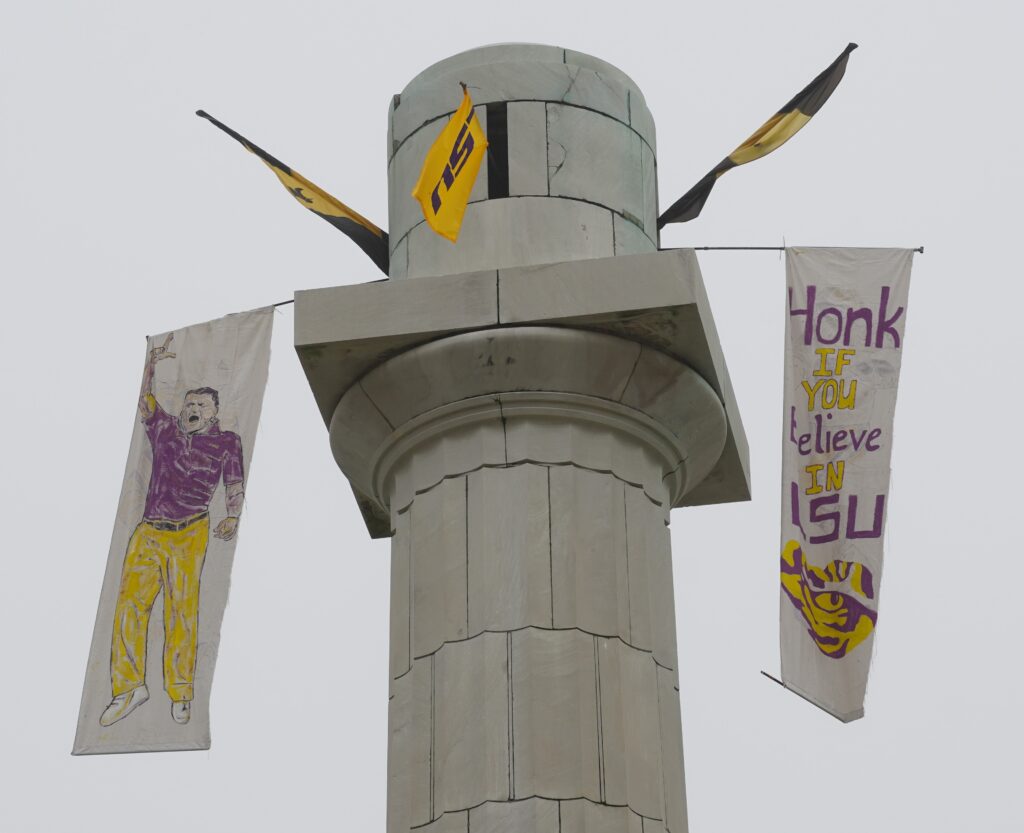
a
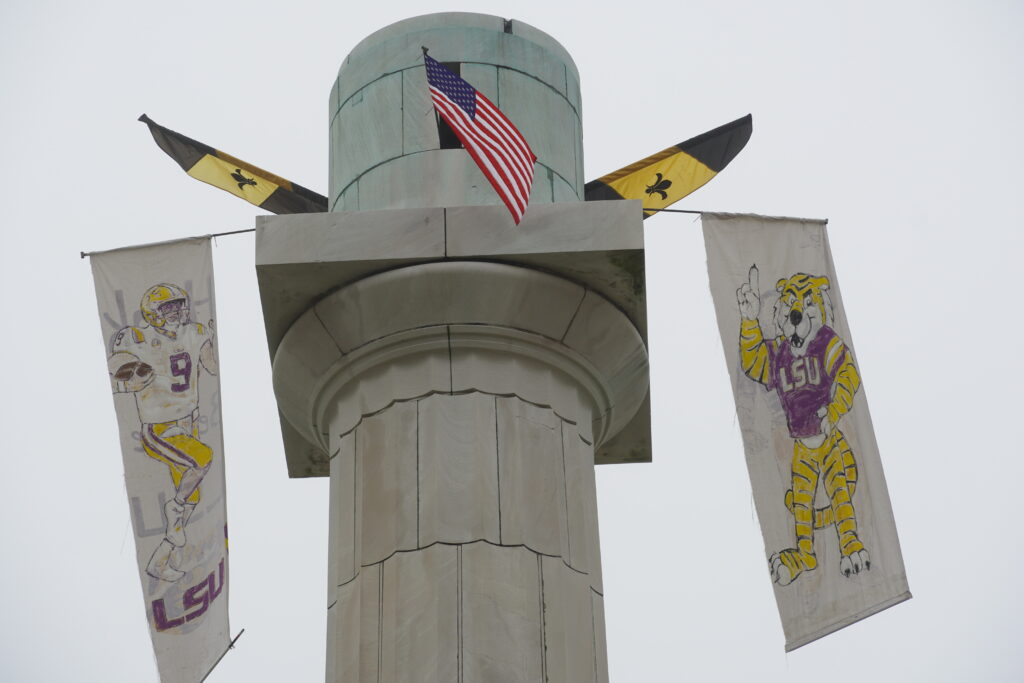
z

Lee’s Contribution to University Curriculums

z
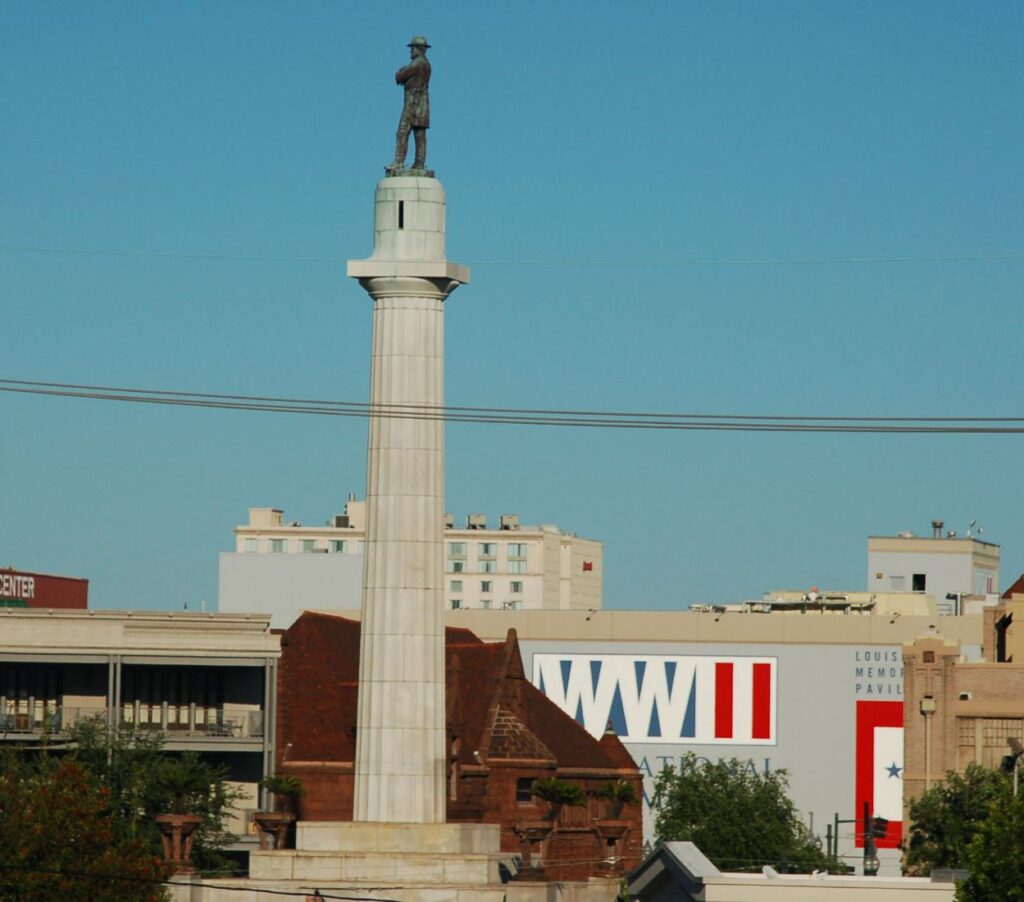
s

In 2020 the Krewe of Bacchus parade theme was “The Wild Wild West.”
We think of Mardi Gras as fun, but it is also educational. The floats of Bacchus tell the story of St. Louis as the gateway to the West.
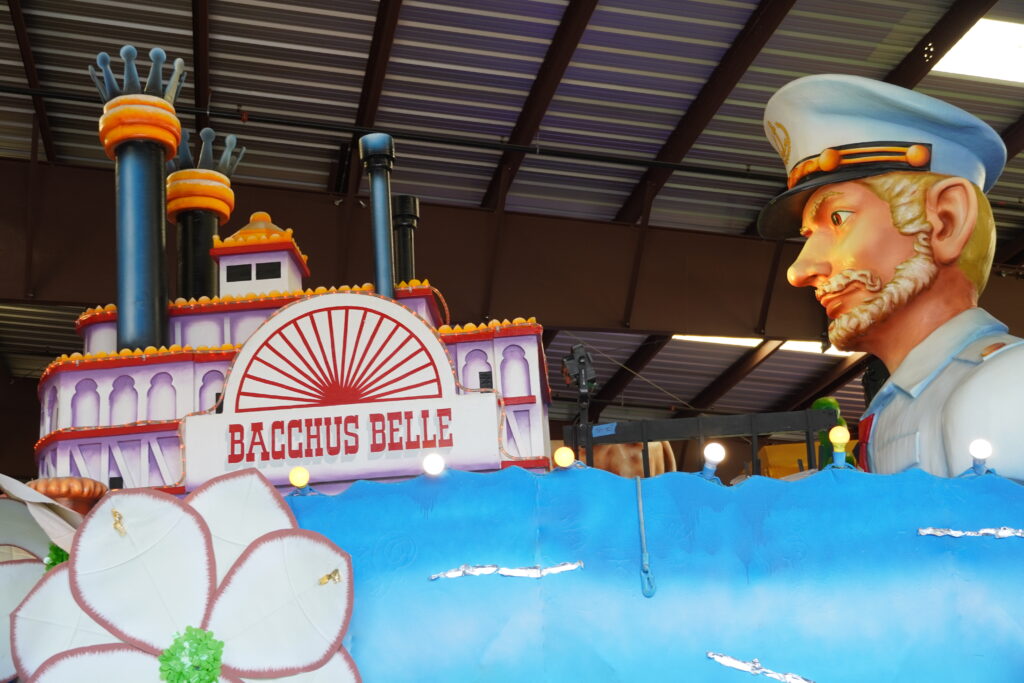

s


The Railroad Act of 1862
In the 1850s Congress commissioned several topographical surveys across the West to determine the best route for a railroad, but private corporations were reluctant to undertake the task without Federal assistance. In 1862 Congress passed the Pacific Railway Act, which designated the 32nd parallel as the initial transcontinental route and gave huge grants of lands for rights-of-way. The act was an effort to aid in the construction of a railroad and telegraph line from the Missouri River to the Pacific Ocean and to secure the use of that line to the government.
The Crédit Mobilier scandal of 1867, which came to public attention in 1872, was a two-part fraud by the Union Pacific Railroad and the Crédit Mobilier of America construction company in the building of the eastern portion of the First Transcontinental Railroad. First, a fraudulent company, Crédit Mobilier, was created by Union Pacific executives to greatly inflate construction costs. Though the railroad cost only $50 million to build, Crédit Mobilier billed $94 million to Union Pacific, and Union Pacific executives pocketed the excess $44 million. The second part involved using part of the excess cash and $9 million in discounted stock to bribe several Washington politicians for laws and regulatory rulings favorable to the Union Pacific.[1] The scandal negatively affected the careers of many politicians and nearly bankrupted Union Pacific.

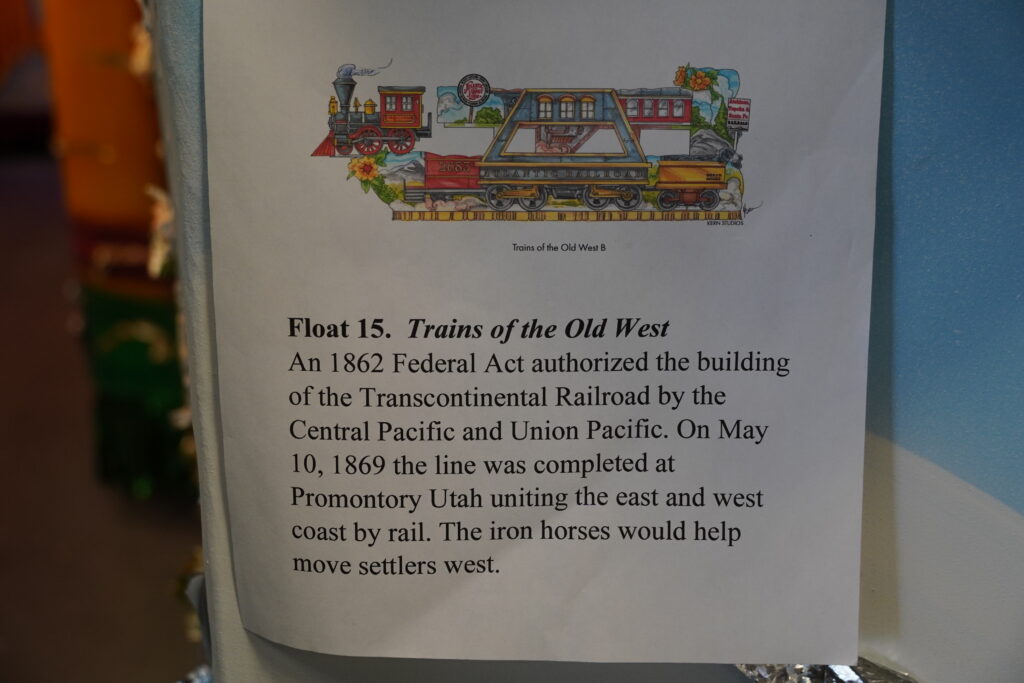
a
The Homestead Act of 1862
The Homestead Act, enacted during the Civil War in 1862, provided that any adult citizen, or intended citizen could claim 160 acres of surveyed government land. Claimants were required to “improve” the plot by building a dwelling and cultivating the land.
Although this act was included in the Republican party platform of 1860, support for the idea began decades earlier. Even under the Articles of Confederation, before 1787, the distribution of government lands generated much interest and discussion.
The act, however, proved to be no panacea for poverty. Comparatively few laborers and farmers could afford to build a farm or acquire the necessary tools, seed, and livestock. Unfortunately, the act was framed so ambiguously that it seemed to invite fraud, and early modifications by Congress only compounded the problem. Most of the land went to speculators, cattlemen, miners, lumbermen, and railroads. Of some 500 million acres dispersed by the General Land Office between 1862 and 1904, only 80 million acres went to homesteaders.
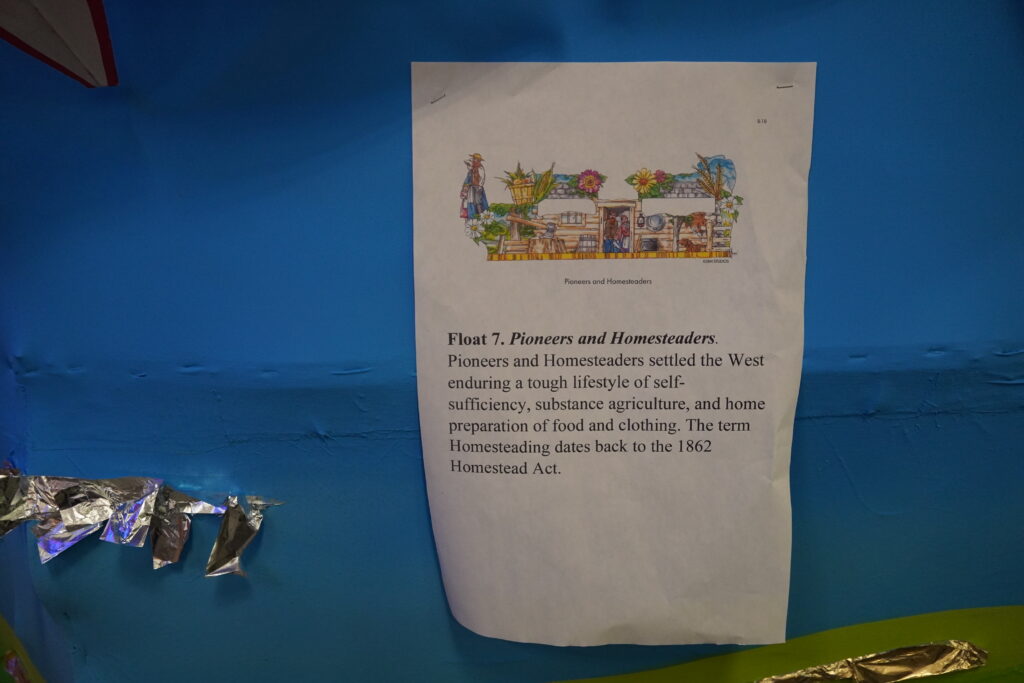
a

a
New Orleans Mardi Gras Indians
Founded in 1885, by former Buffalo Soldiers who performed as Indians in Buffalo Bills’ Wild West Show. The show travelled to New Orleans in 1884 for the World Cotton Exposition. For Mardi Gras 1885, the former Buffalo Soldiers wore their Indian Costumes and thus the Mardi Gras Indians were created.

William F. “Buffalo Bill” Cody opened Buffalo Bill’s Wild West show on May 19, 1883 at Omaha, Nebraska. His partner that first season was a dentist and exhibition shooter, Dr. W.F. Carver. Cody and Carver took the show, subtitled “Rocky Mountain and Prairie Exhibition,” across the country to popular acclaim and favorable reviews, launching a genre of outdoor entertainment that thrived for three decades and survived, in fits and starts, for almost three more.
The idea had been around for a long time. The earliest antecedent to Buffalo Bill’s Wild West show may actually have been staged in France in the middle of the sixteenth century when fifty Brazilian Indians were brought to Rouen to populate a replica of their village. Elevated walkways enabled royal visitors to watch the Indians play at real life. Exotic elements of Native American life later became staples of European and American circuses.
Horse shows and menageries with exotic animals had been popular in America since the eighteenth century. The “Indian Gallery” of artist George Catlin featured American Indians with native dress and accouterments to complement his paintings. Medicine Shows employed frontiersmen and Indian people to help sell tonics and other “natural” cures.
In 1872, legendary plainsman Wild Bill Hickok joined several cowboys and Indians in a “Grand Buffalo Hunt” staged at Niagara Falls. Buffalo Bill Cody himself had already been in show business for a decade, staging plays known as “border dramas,” which actually were small-scale Wild West shows featuring genuine frontier characters, real Indians, fancy shooting, and sometimes horses.


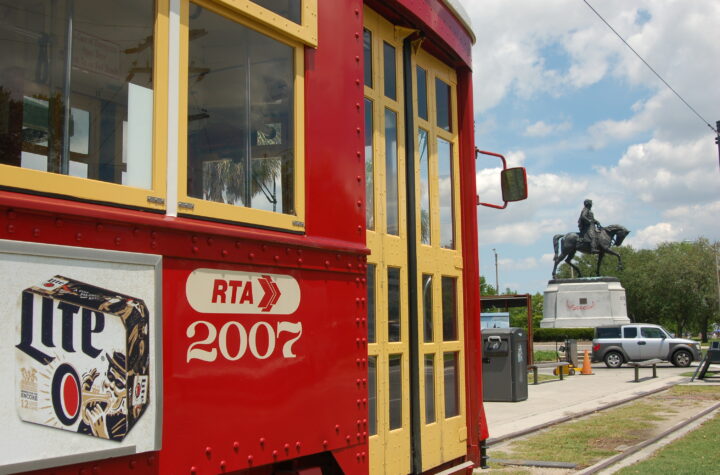

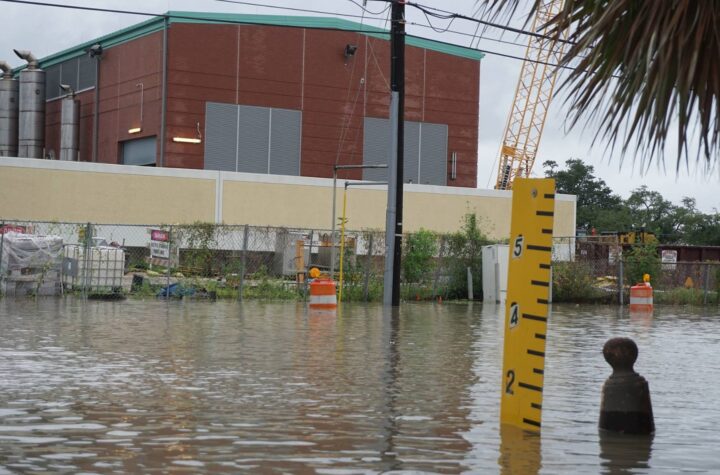
More Stories
Jefferson Davis’ Contribution: Transcontinental Railroads, the Smithsonian Institute, and Long-Distance Communications